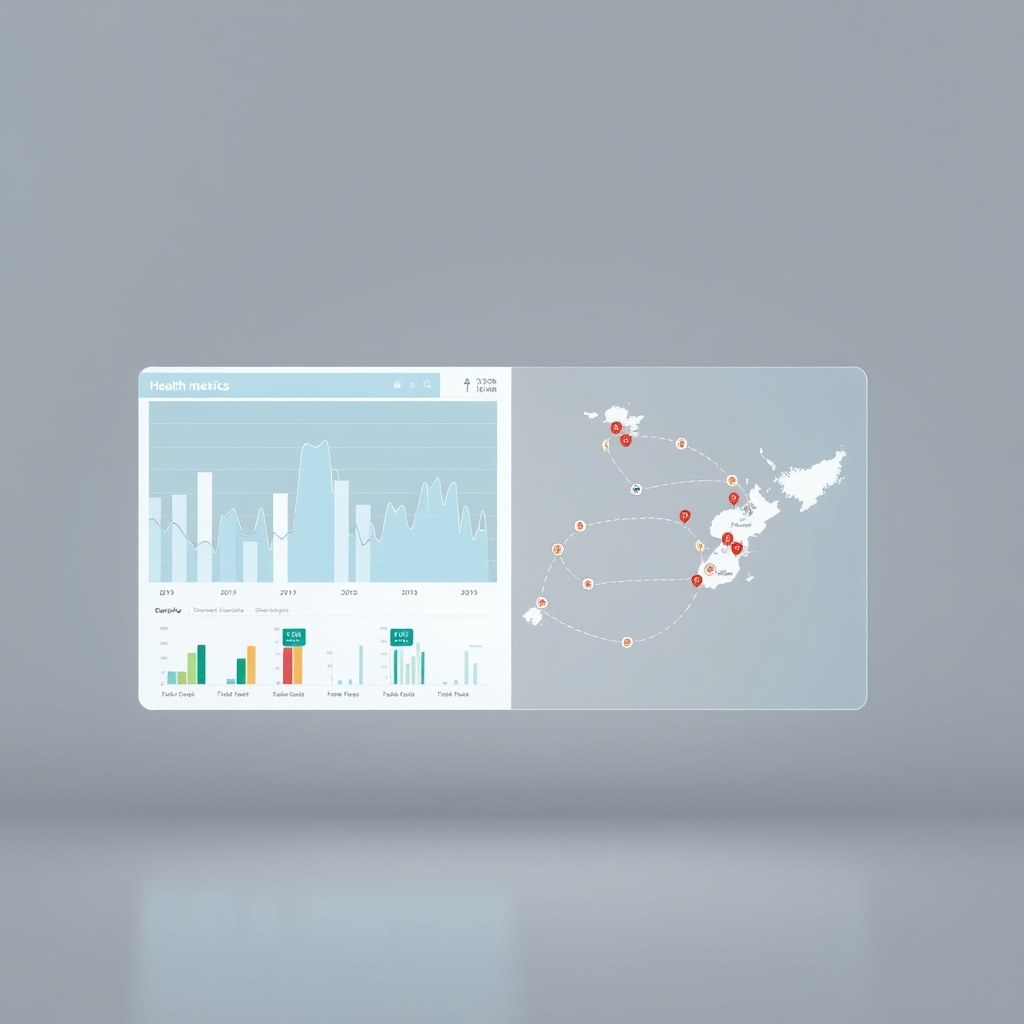Calculate Health Metrics API vs Vessel Location API: What to Choose?

When it comes to integrating APIs into applications, developers often face the challenge of choosing the right one for their specific needs. In this blog post, we will compare two powerful APIs: the Calculate Health Metrics API and the Vessel Location API. Each API serves distinct purposes and offers unique features that cater to different use cases. By the end of this post, you will have a clearer understanding of which API to choose based on your requirements.
Overview of Both APIs
The Calculate Health Metrics API is a cutting-edge software solution designed to provide comprehensive health metrics calculations for various health-related applications. It accurately calculates a wide range of health metrics, such as body mass index (BMI) and body fat percentage, using advanced algorithms that adhere to industry standards. This API is flexible, allowing developers to configure it to suit their specific needs and supports input formats like JSON for easy integration.
On the other hand, the Vessel Location API provides real-time data on a vessel's location, speed, course, and other key details. It includes essential navigational information such as the vessel's MMSI (Maritime Mobile Service Identity) and IMO (International Maritime Organization) number, along with latitude and longitude coordinates. This API is crucial for applications that require tracking and monitoring of maritime vessels.
Feature Comparison
Calculate Health Metrics API Features
One of the standout features of the Calculate Health Metrics API is the ability to calculate body fat percentage. The Get BodyFat feature allows users to input parameters such as sex, age, height, and weight to obtain an accurate body fat percentage. This feature is particularly useful for fitness applications and health assessments.
{"age":29.0,"bmi":"21.1 kg/m²","bodyfat":"26.59 %","bodyfat_status":"Average","gender":"female","height":"1.6 m","weight":"52.0 kg"}In the example response, the API returns the user's age, BMI, body fat percentage, body fat status, gender, height, and weight. Each of these fields provides valuable insights into the user's health status, enabling developers to create personalized wellness recommendations.
Another key feature is the Get BMI capability. This feature requires users to input their height and weight, and it returns the BMI along with the weight status. This is essential for applications focused on weight management and health tracking.
{"bmi":"31.2 kg/m²","height":"1.6 m","weight":"80.0 kg","weight_status":"Obese"}The response includes the BMI value, height, weight, and weight status, which can be used to assess health risks and guide users towards healthier lifestyle choices.
Vessel Location API Features
Turning to the Vessel Location API, the Position Data feature is its core functionality. To utilize this feature, developers must provide an IMO and MSSI in the parameters. This feature returns real-time data about a vessel's location, speed, course, and navigation status.
[{"AIS":{"MMSI":304491000,"TIMESTAMP":"2025-03-12 22:09:22 UTC","LATITUDE":41.78488,"LONGITUDE":-9.01538,"COURSE":335.0,"SPEED":11.0,"HEADING":336,"NAVSTAT":0,"IMO":9361342,"NAME":"NORMAN","CALLSIGN":"V2QX9","TYPE":79,"A":78,"B":11,"C":7,"D":7,"DRAUGHT":5.9,"DESTINATION":"BRAKE","LOCODE":"DEBKE","ETA_AIS":"03-17 06:30","ETA":"2025-03-17 06:30:00","SRC":"TER","ZONE":"North East Atlantic Ocean","ECA":false,"DISTANCE_REMAINING":null,"ETA_PREDICTED":null}}]The response includes various fields such as MMSI, timestamp, latitude, longitude, course, speed, heading, navigation status, IMO, vessel name, and destination. Each of these fields is crucial for maritime tracking applications, allowing users to monitor vessel movements and optimize routes.
Example Use Cases for Each API
The Calculate Health Metrics API is ideal for health and fitness applications that require tracking of BMI and body fat percentage. For instance, a fitness app could use this API to provide users with personalized health reports based on their metrics, helping them to set and achieve fitness goals.
In contrast, the Vessel Location API is perfect for logistics and shipping companies that need to track their vessels in real-time. By integrating this API, companies can optimize their shipping routes, monitor vessel performance, and ensure timely deliveries.
Performance and Scalability Analysis
Both APIs are designed with performance and scalability in mind. The Calculate Health Metrics API utilizes advanced algorithms to ensure quick and accurate calculations, making it suitable for applications that require real-time health analytics. Its robust architecture allows for easy scaling as user demand increases.
Similarly, the Vessel Location API is built to handle high volumes of data, providing real-time updates without significant latency. This is crucial for applications that rely on timely information for decision-making in maritime operations.
Pros and Cons of Each API
Calculate Health Metrics API
- Pros:
- Accurate and reliable health metrics calculations.
- Flexible configuration options for developers.
- Extensive documentation and support.
- Cons:
- Limited to health-related applications.
- May require additional data for comprehensive assessments.
Vessel Location API
- Pros:
- Real-time tracking and monitoring capabilities.
- Comprehensive data on vessel status and navigation.
- Integration with maritime tracking systems for data accuracy.
- Cons:
- Requires specific parameters (IMO, MSSI) for data retrieval.
- Primarily focused on maritime applications.
Final Recommendation
Choosing between the Calculate Health Metrics API and the Vessel Location API ultimately depends on your specific use case. If your application is centered around health and fitness, the Calculate Health Metrics API is the clear choice due to its comprehensive health metrics calculations and flexibility.
Conversely, if your focus is on maritime operations and vessel tracking, the Vessel Location API is the better option. Its real-time data capabilities and detailed vessel information make it indispensable for logistics and shipping applications.
In conclusion, both APIs offer unique features and capabilities that cater to different needs. By understanding the strengths and weaknesses of each, developers can make informed decisions that align with their project requirements.
Need help implementing the Calculate Health Metrics API? View the integration guide for step-by-step instructions.
Want to use the Vessel Location API in production? Visit the developer docs for complete API reference.





